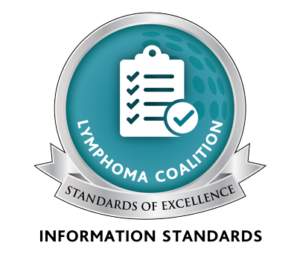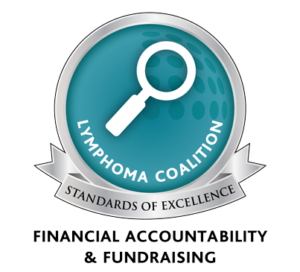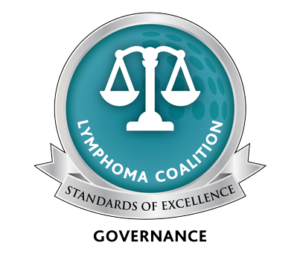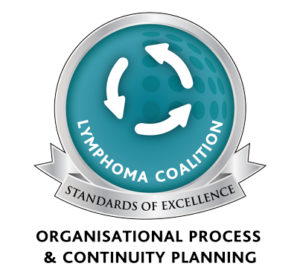While not beginning immediate treatment can sometimes be challenging for people, research has shown that patients who are monitored in this way do just as well as those who begin chemotherapy right away.
Lymphomas that are indolent or slow growing may not need immediate treatment. People who are well, who do not have widespread symptoms, and whose lymph nodes are not obviously enlarging rapidly or threatening an organ may be advised that regular monitoring is the recommended course of action. This monitoring continues until the illness changes and treatment is considered necessary. This protocol is called “Watch and Wait”. While not beginning immediate treatment can sometimes be challenging for people, research has shown that patients who are monitored in this way do just as well as those who begin chemotherapy right away.
“Watch and Wait” is not a protocol that is very well known to the general public. For this reason, when people are first diagnosed with lymphoma and Watch and Wait is prescribed as the best course of action, many patients become worried. “Being told they don’t want to treat you right away feels more like being told they just don’t know what to do”, says Ralph McNabb, who was diagnosed in 2004 with non-Hodgkin lymphoma. “I felt like my specialist had just given up on me, but didn’t want to say so”. Many patients echo this sentiment. In addition, it can almost come as a let-down to those who have spent the previous couple of weeks digesting their diagnosis and gearing up for the treatment.
While some people feel a sense of relief when they hear that they do not need to undergo immediate intervention and life-changing treatment, it is not uncommon for people to struggle with this recommendation, which can be counter-intuitive to their resolve to “fight”. As such, it forms the basis of much discussion among patients and family members. Says Alyssa Burkus Rolf, “Up until now, everything we had heard about cancer was based on the idea that early detection provided the best possible outcomes. How could we simply sit back and wait? Do nothing? When you have cancer?”
Patients often go on to talk about the challenges of explaining Watch and Wait to their friends and family members. As they struggle themselves to wrap their heads around the idea of “doing nothing”, they are faced with having to field questions and concerns from others. “People just didn’t understand why my doctors weren’t rushing to kill the cancer cells in me”, explained Carin Moritz. After finally coming to terms with what the doctors told her was the best course, Carin found herself revisiting the decision every time she spoke with her friends and colleagues. This created a great deal of angst for her between her three month appointments with her specialist, which came as a welcome reassurance for her.
For some, however, even the regular monitoring can be stressful in and of itself. Patients have a lot of questions about what “watching” entails, along with what it is they are “waiting” for. They wonder if they can trust their specialist to be able to watch for the right things, and detect changes early enough. Many patients have facetiously renamed the protocol “Watch and Worry”. Patients may take it on themselves to be “watching” and find they have trouble thinking about anything else. For some, every sniffle, swollen gland, head-ache, or heat wave comes with a new level of anxiety, and they worry that they may be missing something, or not acting soon enough. It can be difficult to feel like they are able to live a normal emotional life. As she recounts aspects of her journey in her blog, Living The Life, Alyssa describes her initial watch and wait experience as “waiting for the other shoe to drop”. She comments, “It wasn’t Watch and Wait, it was ‘do nothing, and wait for what’s next’”. Tracy Nagy, an experienced Advanced Practice Nurse in lymphoma has heard this all too often. “Patients are often expecting to be treated for a cancer diagnosis and the idea of waiting is overwhelming for some. They have to understand their symptoms and understand under what circumstances they should call to be seen if things are changing between appointments.” Becoming an interactive partner in their care can alleviate the feeling that they are just sitting around and waiting.
Feeling like they’re waiting while not doing enough is not the only concern we hear from many lymphoma patients. Some patients have shared that by not undergoing chemotherapy, surgery, or radiation in the initial months after diagnosis, they find themselves living in a sort of “identity limbo”, somewhere between being a cancer patient and being healthy. There is a hallmark visual identifier of a cancer patient, and while it is not the reality for many people in many different stages of their illness, it is certainly the picture formulated in the minds of the general public. Some patients can feel that by not undergoing treatment right away, people won’t feel they are justified in going through some of the feelings of a person newly diagnosed with cancer. It can seem like they have not been given the chance to earn their cancer stripes, so to speak. They may not feel like they are justified in seeking out support or experiencing challenges other newly diagnosed patients may have. It can take some time to adjust their expectations during this, and to become comfortable with their own unique experience.
Of course, while the issues are quite complex, and Watch and Wait can carry with it a unique set of emotional challenges, the truth is that being newly diagnosed is unique and complex in every situation. It is important for patients to be educated about Watch and Wait, that it is a credible treatment protocol and the standard of care in many lymphoma cases. There are benefits to this protocol as well. Sometimes, doing nothing is exactly what some patients need. Where many newly diagnosed patients are thrust into a whirlwind of activity and decision-making, Watch and Wait affords people some much needed to time to learn, connect, and explore options. It can be helpful to try to see the advantage in knowing that specialists do not see the lymphoma stage as being an imminent threat to their health, and that they will not need to be exposed to the risks of chemotherapy any sooner than is necessary. As well, by delaying chemotherapy until it is required, the potential resistance to chemotherapy drugs can be kept to a minimum, leaving it more likely to be effective in treating the lymphoma when it is actually given.
Being prescribed Watch and Wait certainly carries with it unique issues and challenges, and does not always feel like the blessing many try to purport it to be. Patients need to be supported to deal with the notion of being monitored versus immediately treating their cancer aggressively, as well as navigating through this with their family, friends, and acquaintances. Learning how to move forward in living their life is not something that necessarily comes easily, but sometimes simply understanding that these feeling are normal can make a world of difference.






